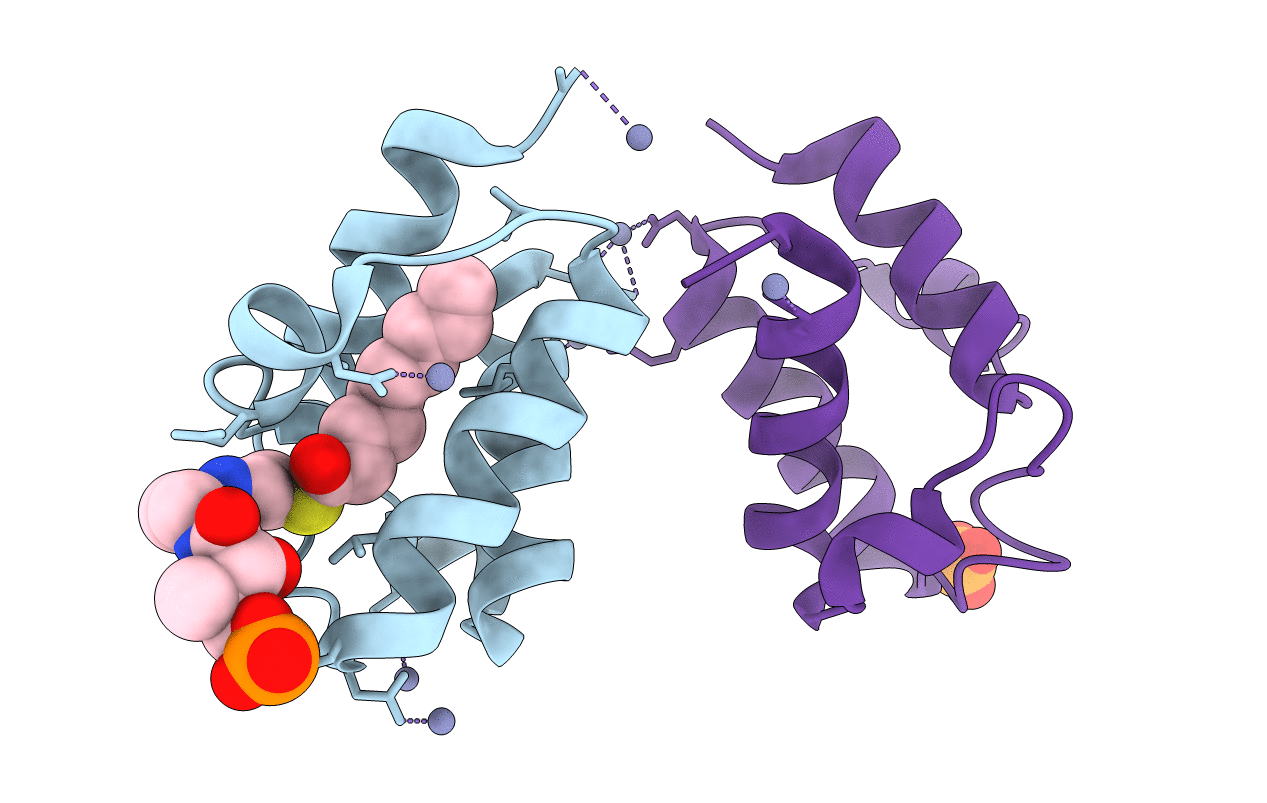Abstact
A knowledge of the structures of acyl chain loaded species of the acyl carrier protein (ACP) as used in fatty acid biosynthesis and a range of other metabolic events, is essential for a full understanding of the molecular recognition at the heart of these processes. To date the only crystal structure of an acylated species of ACP is that of a butyryl derivative of Escherichia coli ACP. We have now determined the structures of a family of acylated E. coli ACPs of varying acyl chain length. The acyl moiety is attached via a thioester bond to a phosphopantetheine linker that is in turn bound to a serine residue in ACP. The growing acyl chain can be accommodated within a central cavity in the ACP for transport during the elongation stages of lipid synthesis through changes in the conformation of a four alpha-helix bundle. The results not only clarify the means by which a substrate of varying size and complexity is transported in the cell but also suggest a mechanism by which interacting enzymes can recognize the loaded ACP through recognition of surface features including the conformation of the phosphopantetheine linker.



